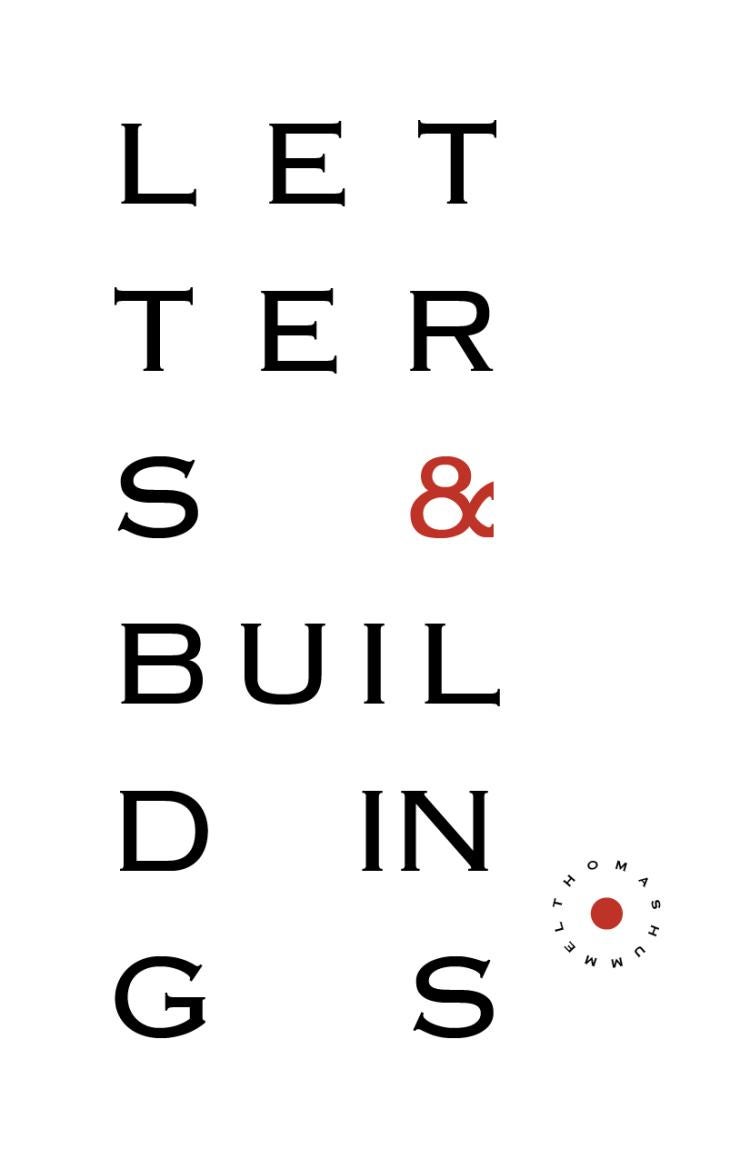Letters & Buildings. - Thomas Hummel

Poems
Paperback, 106 pages
ISBN: 978-0-9831150-9-0
2014
Praise for Letters & Buildings.
In Letters & Buildings., frames built of nuanced connotation open to expose within them fields of absence, which are played upon by characters as well as cadences of deep sentience. Thomas Hummel offers strategic juxtaposition of affect and intellection, of idea and indelible image, even as the inconstancy of any given instant instantiates itself. Here, the synthetic nature of utilized texts is deployed to decry any simple synthesis—nonetheless, a profound kinesthesia, a revealing awareness of the positioning and movement of thought’s objects, emerges. Here, the daunting tasks undertaken in order to clarify the immeasurability of meaning become a heroic taxonomy, but with the hero removed, deftly cut away—only his shadow remains. It is a shadow of the uncanny, which is also an outline of experience, outlandishly exact, one in which we recognize ourselves.
~ RUSTY MORRISON
“The what in want went wrong,” and that want is the want of the father who “doesn’t do as well in life as father could,” the father who “does not know or does not care that [the] father may be hurt.” Thomas Hummel’s brilliant Letters & Buildings. ruthlessly interrogates the faults in fatherhood: no pity, no self pity, only precision. But that’s not all. At once a study of the “movement of thought” and a novelistic collage about the attempt to “forgive the day everything” and forgive the self its “psychosomatic withdrawals,” this book is a hymn to thinking shot through with feeling. I am fascinated, drawn in again and again to Hummel’s restless mind finding form.
~ JULIE CARR
The scrupulously constructed works collected in Letters & Buildings. evade, eviscerate, tickle, infuriate, confound, confide, and ultimately amaze. Moreover, they insist that their readers pay very close attention, unusually close—and not merely to what the poems would appear to articulate, but also to the particular materials they make use of and how they are assembled on the page. To do so will, or at least can, awaken in readers a sort of kinesthetic sympathy, a not inaccurate sense that we are ourselves participating in what we perceive. This welcome confusion of subject and object harmonizes with the notion, implicit throughout the book, that people, like the poems they write and the structures they call home, are made the way they are from what there is to make from, and with, and for. In other words, there is nothing cheap or small about the pleasures to be had here, no matter that poems do, more often than not, situate us as if “before a dangerous leap,” where “consciousness is agonizingly intense.” The soundness of their physical structures counterpoints this intensity with stability and grace, so that even as poems sensitize us to the dangers they anticipate, they likewise remind us it was only the house of the third little pig, the dour one who built with brick, that withstood the wolf ’s breath.
~ TIMOTHY DONNELLY

